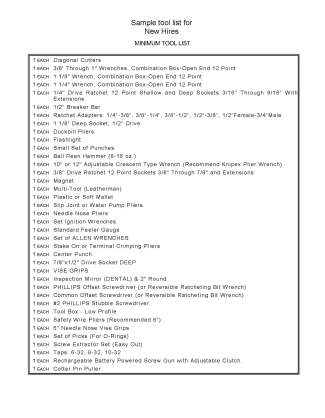Ratchets
The quarter inch socket set is the most necessary component in the Aircraft Mechanics tool set. When we begin using tools there are some that just fit our particular hand shape better than others. This is particularly true with the Quarter Inch Ratchet. When choosing a ratchet of any size buy a quality brand. Fine tooth ratchets are for tighter places but the finer teeth are less robust than the coarser teeth and may not take the torque that a course tooth ratchet of the same brand might. Swivel handles make excellent “speed” handles but become uncontrollable when paired with a universal socket. My fight line bag contains a fine tooth standard 1/4″ ratchet and a coarser tooth swivel handle 1/4″ ratchet which is my go to ratchet for almost every normal job. I have very big hands so the length of the swivel handle just fits better.
Quality tool truck brands are very expensive and you may not have access to any particular brand, but for me there are just certain tools that I can’t be without and I will search out a tool truck to obtain and maintain them. The two ratchets that I have linked to are on that list.
I also own some older Craftsman ratchets that are excellent but you have to scour flea markets, yard sales, estate sales etc. unless your grandpa left them to you to find these.
Although I have not used them much, Gearwrench by APEX should be a very good alternative to the more expensive brands. They make a fine tooth close tolerance 1/4″ drive, also in a swivel head, that looks to be very usable.
1/4 Inch Drive Sockets
A full set of 1/4″ standard and deep 12 point sockets from 3/16″ up to at least 1/2″ is a must. Most good quality brands will do, but I search for US or German steel although some Oriental brands use quality steel as well.
A set of 1/4″ SAE 12 point universal sockets is also a must but if you can’t afford the entire set immediately, then the 5/16″ and 1/4″ will get you started. The Snap-On version is still the best on the market, though a few other brands are close.
Don’t forget the Bit Holder, some of the larger sets will include one, but with those you also get a bunch of items you will never use.
Extensions
I have recently been using locking extensions. I wasn’t a big fan at first, but because my line bag is only 12″ long I have to use multiple extensions to get a bar over 12 inches and the locking mechanism adds security.
